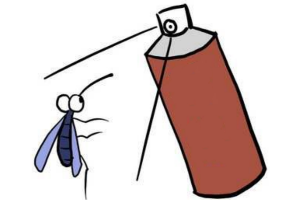Nuntii
Nuntii
-

Quae sunt differentiae inter zeatinum, Trans-zeatinum et zeatini ribosidum? Quae sunt applicationes eorum?
Munera principalia 1. Divisionem cellularum, praesertim divisionem cytoplasmatis, promovet; 2. Differentiationem gemmarum promovet. In cultura textuum, cum auxino interagitur ad differentiationem et formationem radicum et gemmarum moderandam; 3. Evolutionem gemmarum lateralium promovet, dominationem apicalem tollit, et sic permittit...Plura lege -

Quae est functio Deltamethrini? Quid est Deltamethrin?
Deltamethrin in formam olei emulsificabilis vel pulveris humectabilis formulari potest. Bifenthrin in formam olei emulsificabilis vel pulveris humectabilis formulari potest et est insecticida mediae fortitudinis cum lato spectro effectuum insecticidarum. Proprietates et contactus et stomachicidas habet. Est medicamentum...Plura lege -

Ratio agriculturae Indiae subito invertit! Undecim biostimulantia ex animalibus derivata ob controversias religiosas prohibita sunt.
India magnam mutationem in rationibus legalibus experta est, cum Ministerium Agriculturae approbationes undecim productorum biostimulantium ex fontibus animalibus derivatorum revocaverit. Haec producta modo nuper ad usum in culturis ut oryza, lycopersicis, solanis, cucumeribus, et... permissa sunt.Plura lege -

Kosakonia oryziphila NP19 ut promotor incrementi plantarum et biopesticidum ad suppressionem pyrimidis oryzae varietatis KDML105.
Hoc studium demonstrat fungum Kosakonia oryziphila NP19, radicibus consociatum et ex radicibus oryzae separatum, esse pesticida biochemica prospera et ad augmentum plantarum promovendum, necnon agentem biochemicum ad pyrimidinem oryzae moderandam. Experimenta in vitro in foliis recentibus Khao Dawk Mali 105 (K...) peracta sunt.Plura lege -

Scientiae Carolinae Septentrionalis insecticidium idoneum gallinariis excogitaverunt.
RALEIGH, NC — Avicultura vim impellentem in industria agriculturae civitatis manet, sed pestis hunc sectorem vitalem minatur. Foederatio Aviculturae Carolinae Septentrionalis dicit eam esse maximam rem civitatis, fere $40 miliarda quotannis ad reditum civitatis conferunt...Plura lege -

Celerrime crescens in mundo! Quae sunt secreta mercatus biostimulantium in America Latina? Impulsa et fructibus et oleribus et cultibus agrestibus, aminoacida/hydrolysata proteinorum viam ducunt.
America Latina nunc est regio cum mercatu biostimulantium celerrime crescente. Magnitudo industriae biostimulantium sine microbiis in hac regione intra quinquennium duplicabitur. Anno 2024 solo, mercatus eius ad 1.2 miliarda dollariorum Americanorum pervenit, et anno 2030, valor eius ad 2.34 miliarda dollariorum Americanorum pervenire potest...Plura lege -

Bayer et ICAR coniunctim combinationem speedoxamati et abamectini in rosis experientur.
In consilio magni de floricultura sustinabili, Institutum Indicum Investigationis Rosarum (ICAR-DFR) et Bayer CropScience Memorandum Intellegentiae (MoU) signaverunt ad experimenta bioefficaciae communia formularum pesticidarum ad pestes maiores in cultura rosarum coercendas incipienda. ...Plura lege -

Quae sunt implicationes efficaciae residuae trium formulationum insecticidarum (mixturae pirimiphos-methyl, clothianidini et deltamethrini, et clothianidini solius) in magna communitate trial...
Propositum huius studii erat aestimare efficaciam residuam magnae scalae aspersionis intra aedes pirimiphos-methyl, deltamethrini et clothianidini combinationis, necnon clothianidini in Alibori et Tonga, regionibus malariae endemicae in Benin septentrionali. Per triennium studii, res...Plura lege -

Curia Brasiliana herbicida 2,4-D in regionibus vini et pomorum magni momenti in meridie interdicere iussit.
Curia in Brasilia meridionali nuper iussit ut 2,4-D, unum ex herbicidis latissime in mundo adhibitis, in regione Campanha Gaucha in meridie patriae interdictum statim fiat. Haec regio est basis magni momenti ad productionem vinorum et malorum optimorum in Brasilia. Haec sententia lata est in...Plura lege -

Investigatores invenerunt quomodo plantae proteinas DELLA regant.
Investigatores e Departamento Biochemiae apud Institutum Scientiarum Indicum (IISc) mechanismum diu quaesitum ad incrementum plantarum terrestrium primitivarum, ut bryophytarum (coetus qui muscos et hepaticas includit), moderandum invenerunt, qui in plantis florentibus posterioribus retinebatur...Plura lege -

BASF SUVEDA® Aerosol Pesticidae Pyrethroidis Naturalis Inducit
Pyrethrinum, substantia activa in aerosol pesticida Sunway a BASF fabricato, ex oleo essentiali naturali e planta pyrethri extracto derivatur. Pyrethrinum cum luce et aere in ambitu reagit, celeriter in aquam et dioxidum carbonis dissolvens, nullum residuum post usum relinquens. ...Plura lege -

Effectus lucis in incrementum et evolutionem plantarum
Lux plantis energiam necessariam ad photosynthesim praebet, permittens eis materiam organicam producere et energiam convertere per incrementum et evolutionem. Lux plantis energiam necessariam praebet et est basis divisionis et differentiationis cellularum, synthesis chlorophylli, textuum...Plura lege



